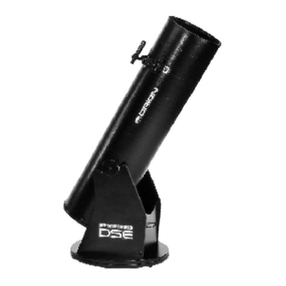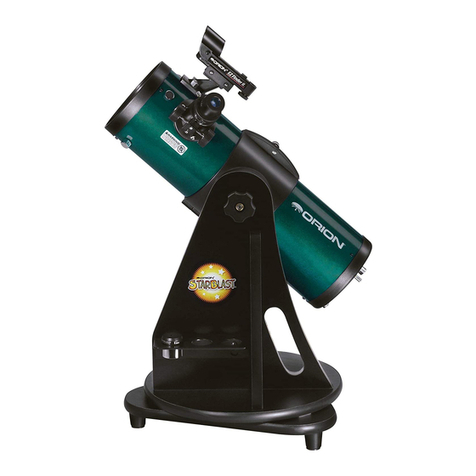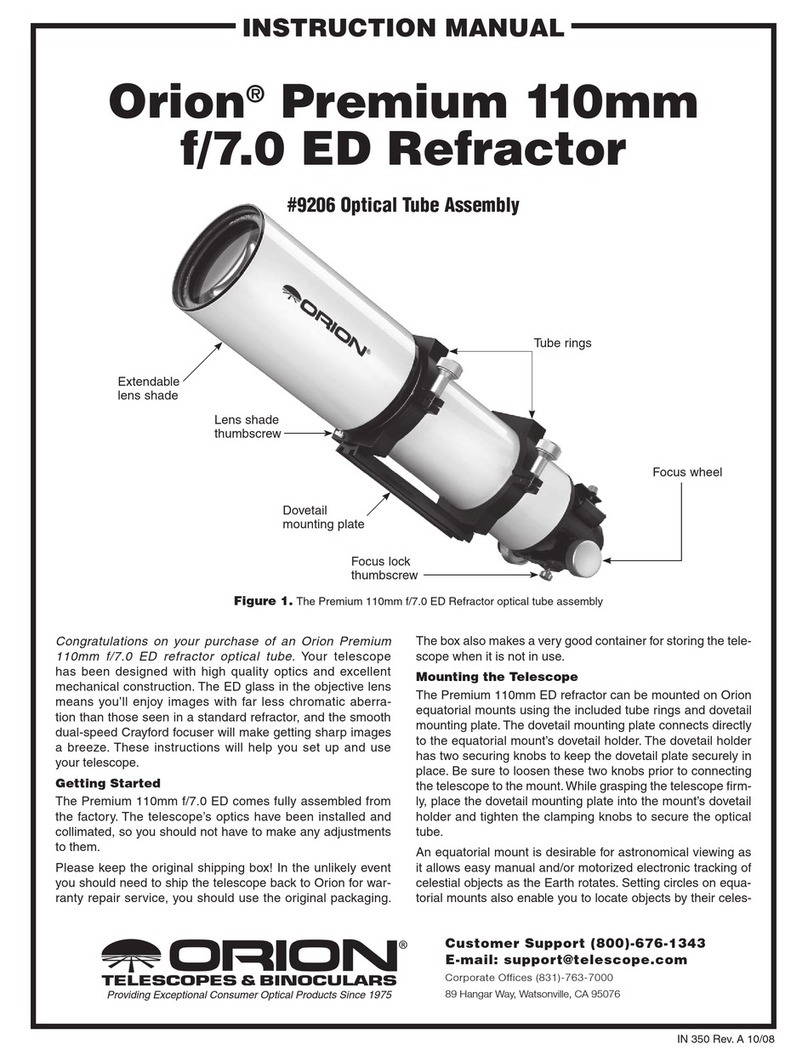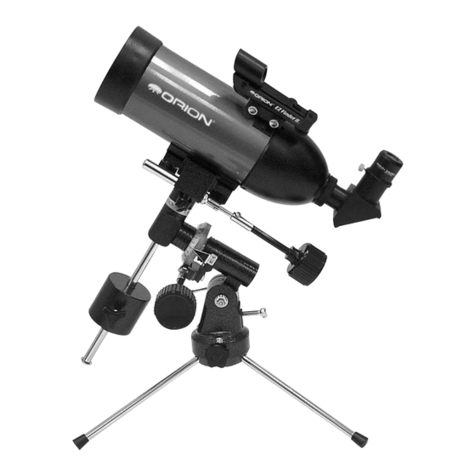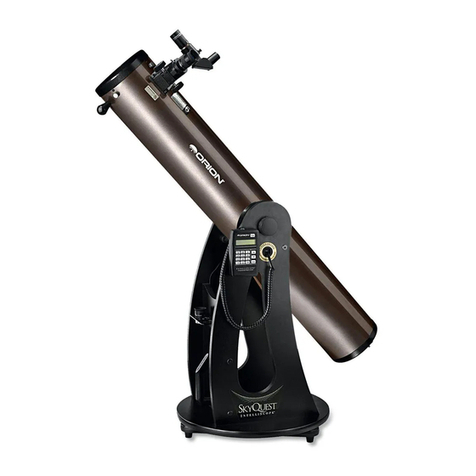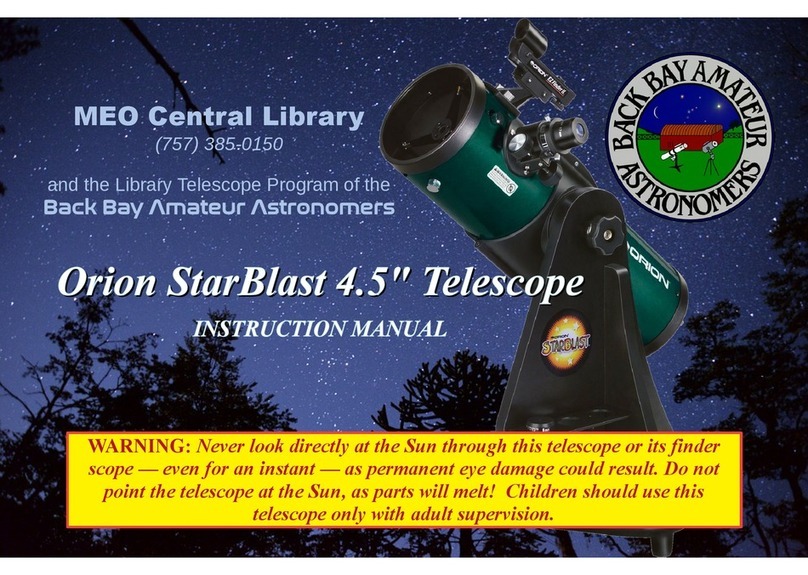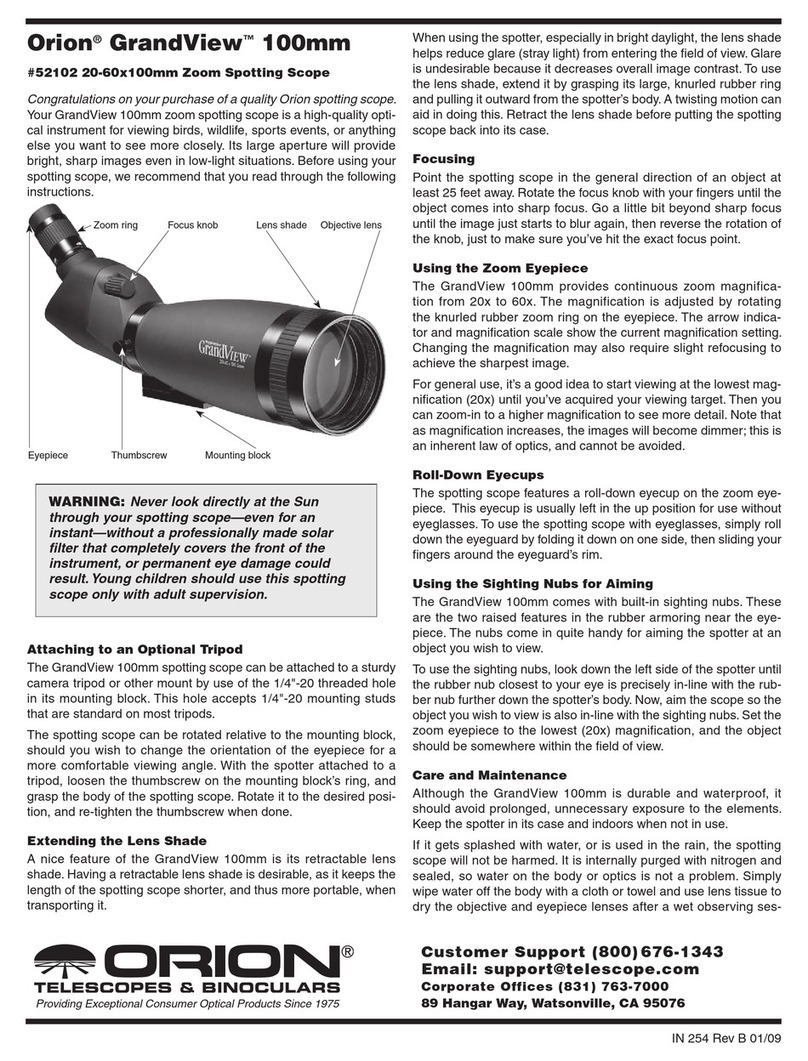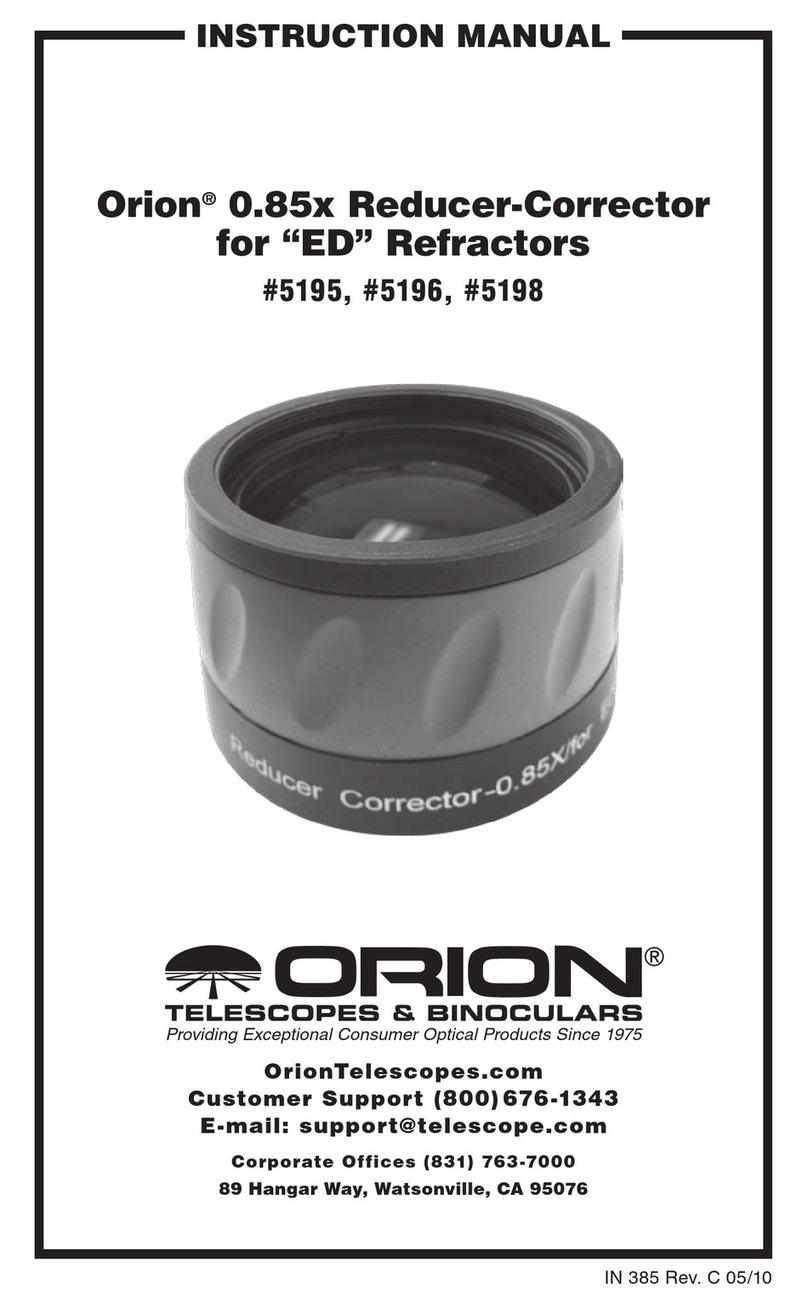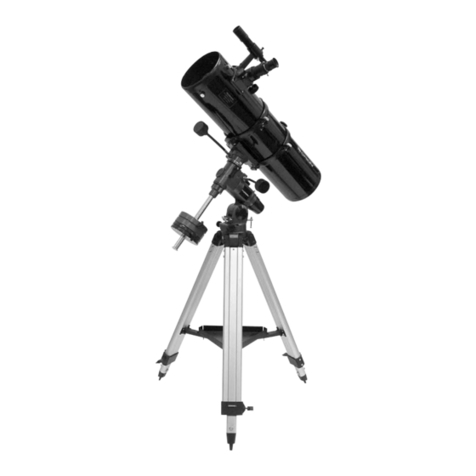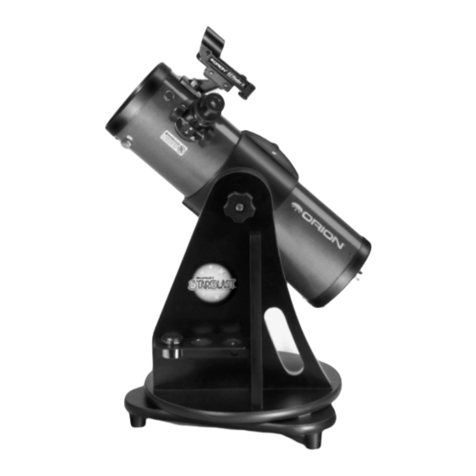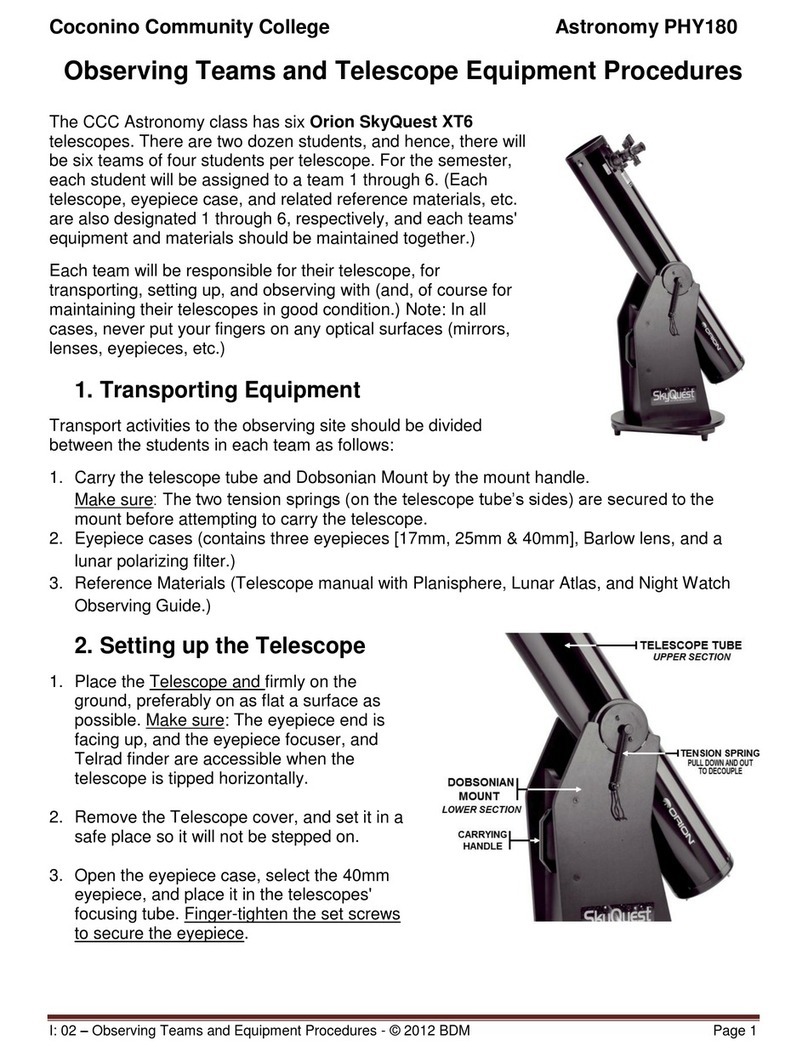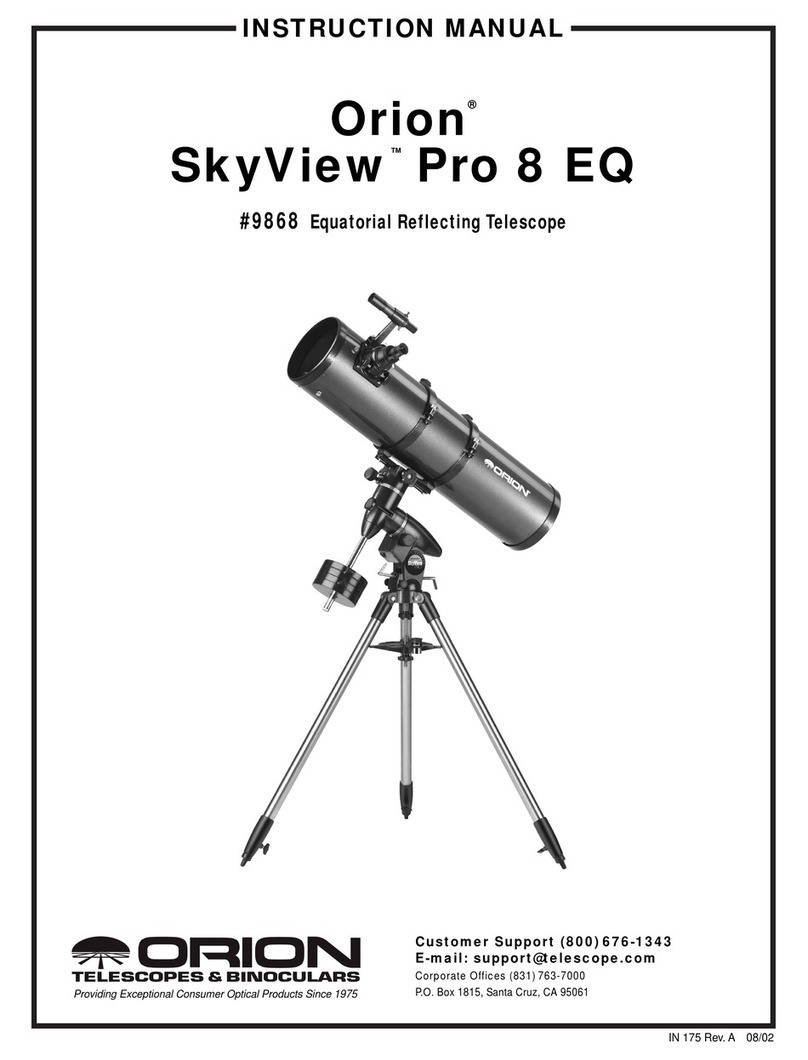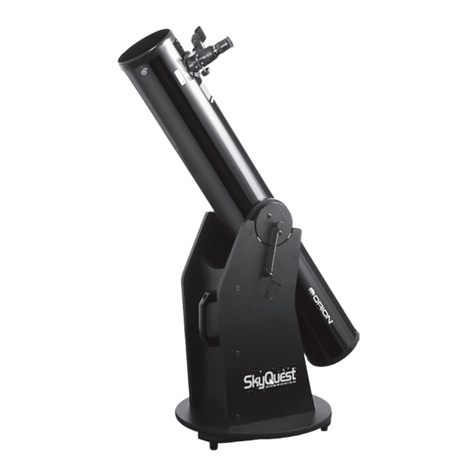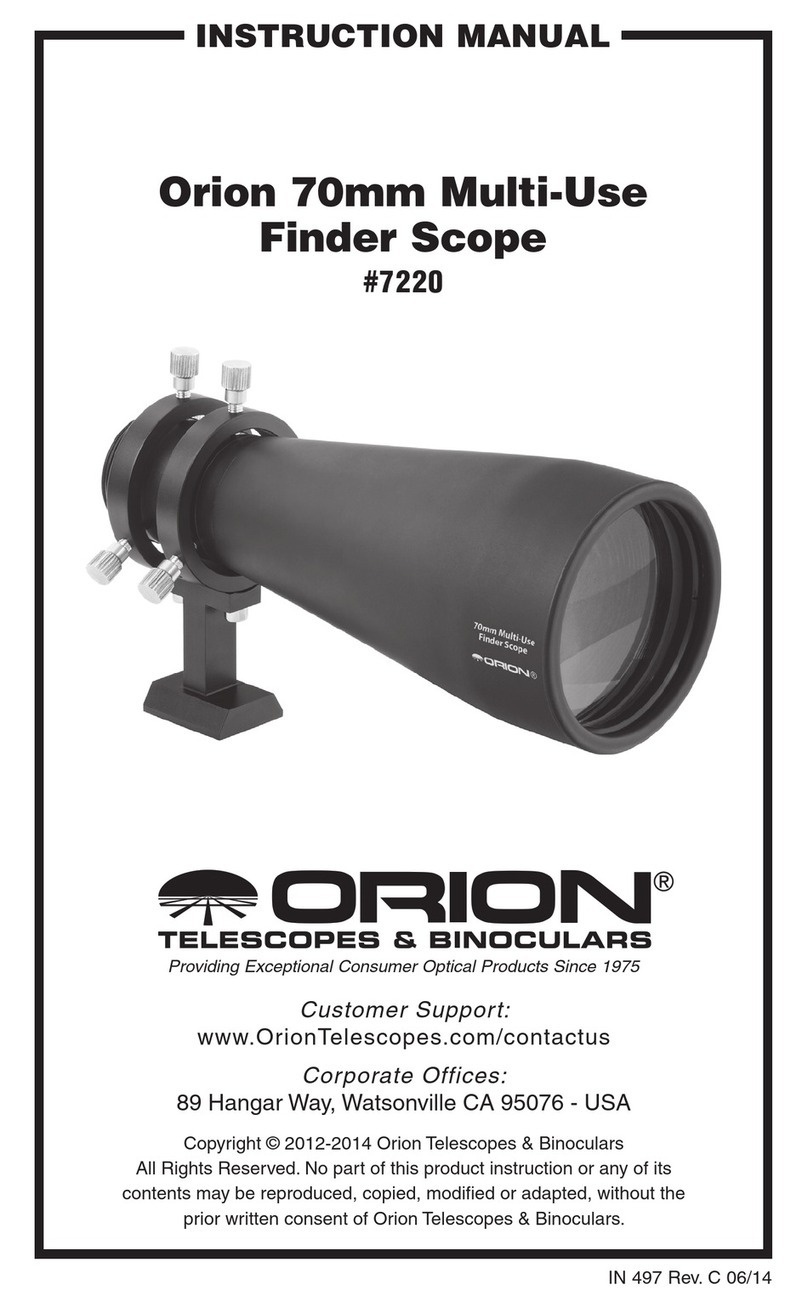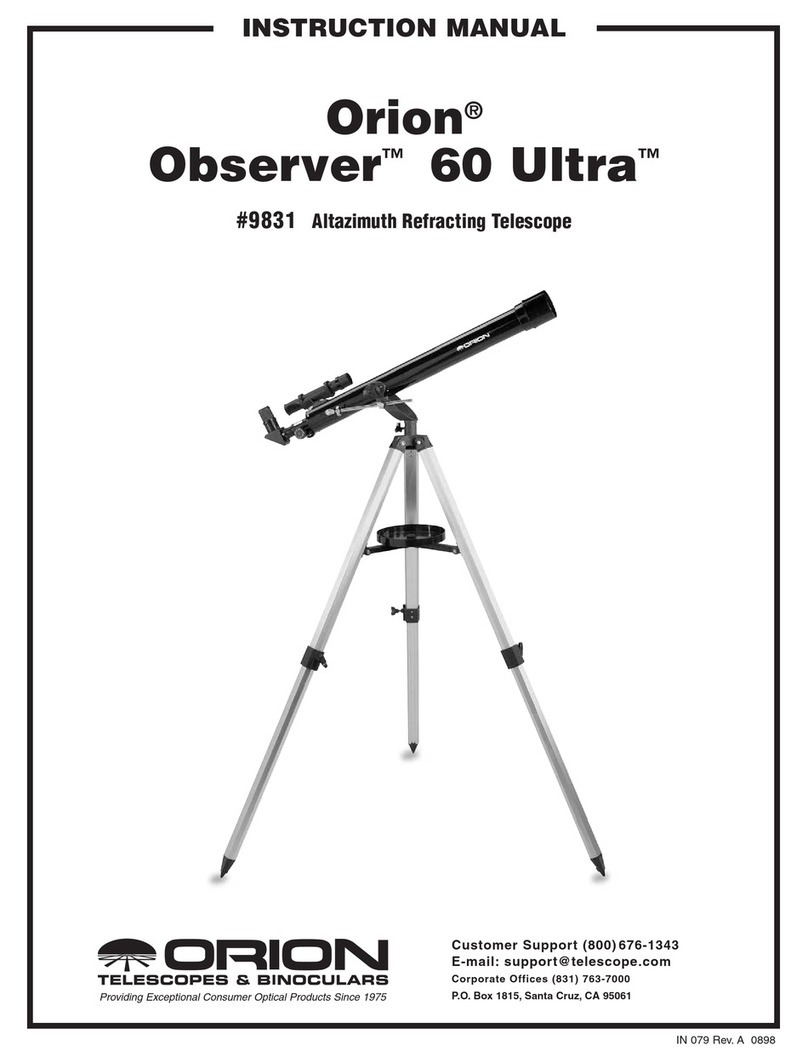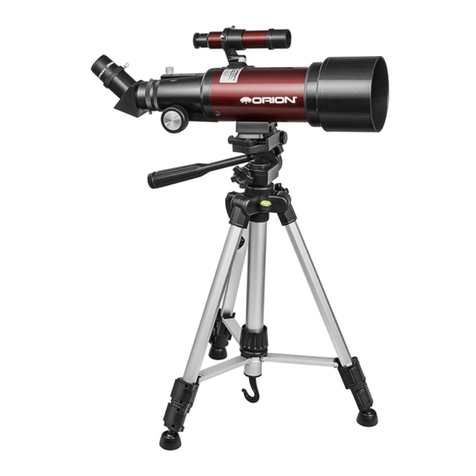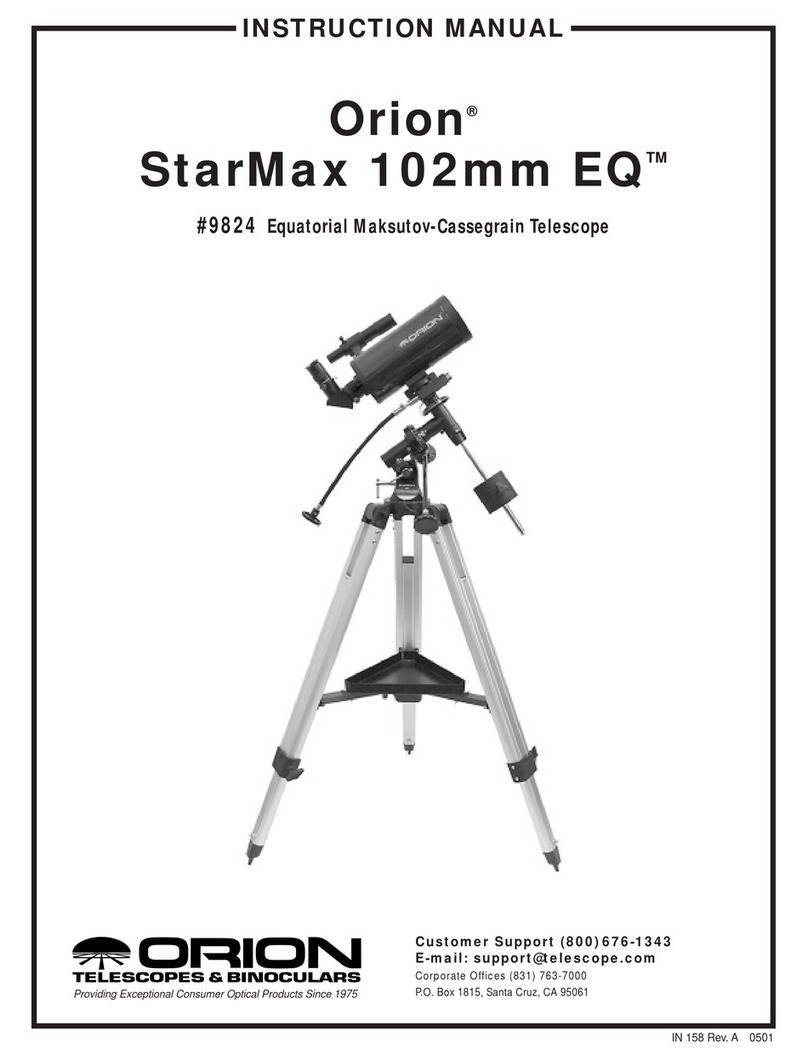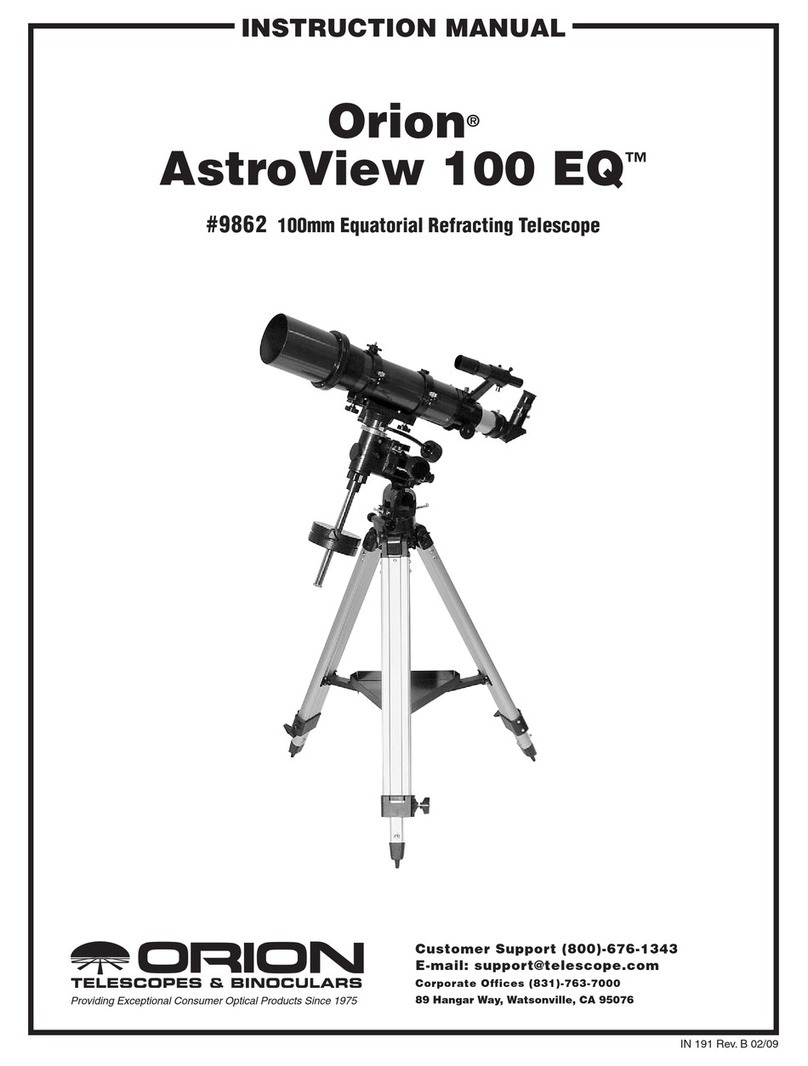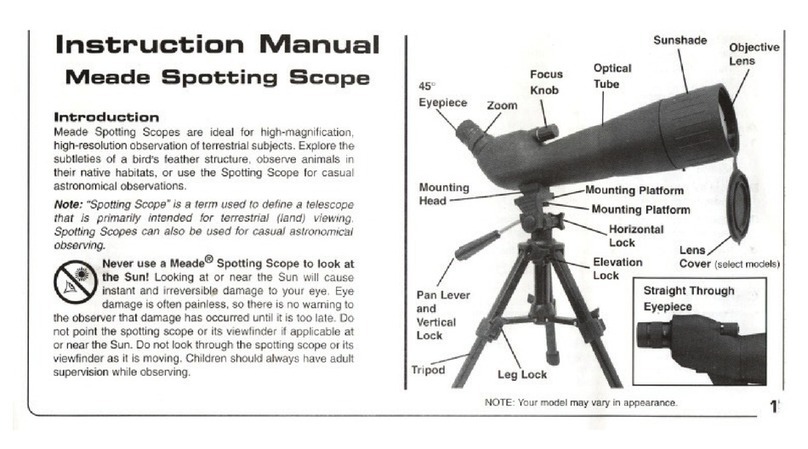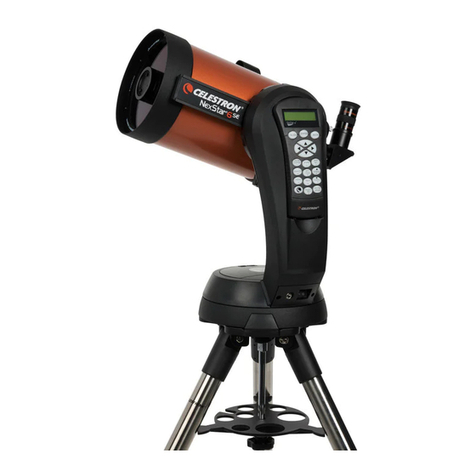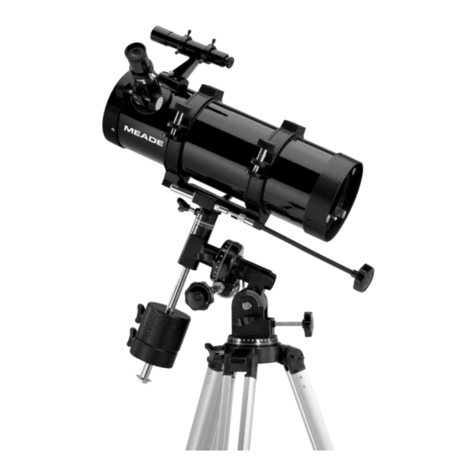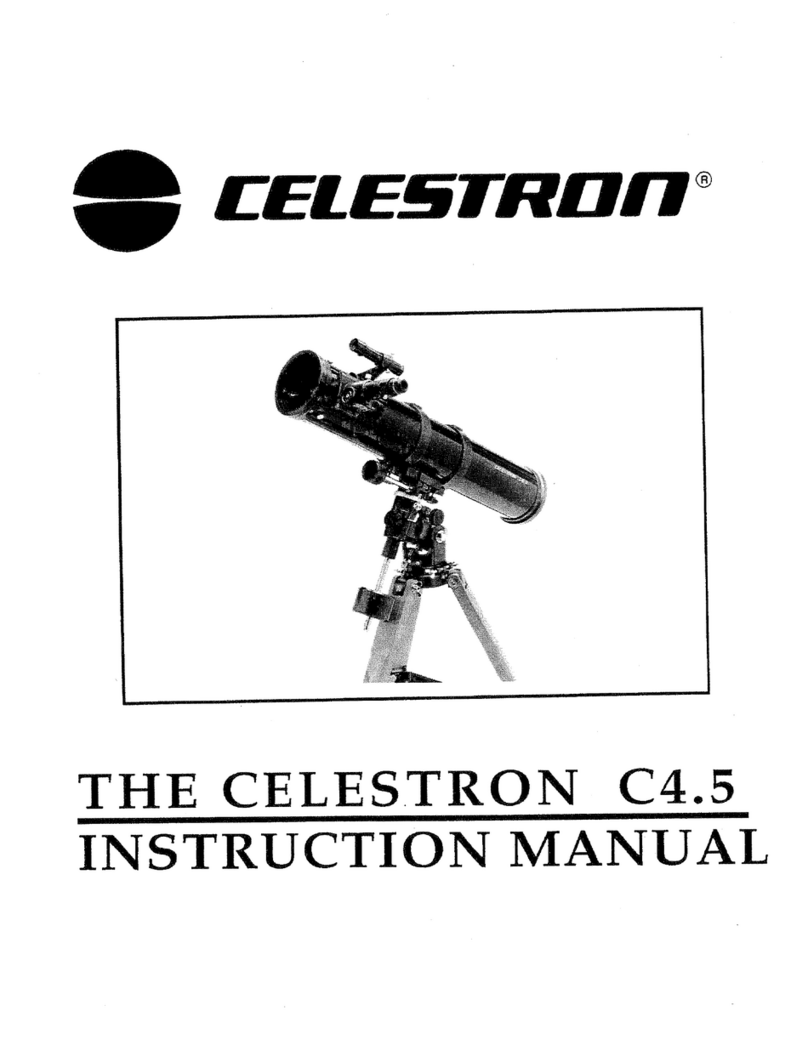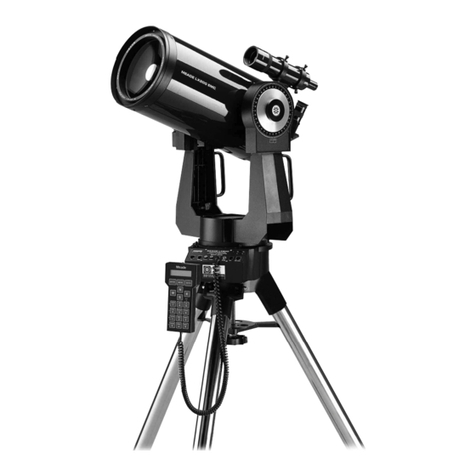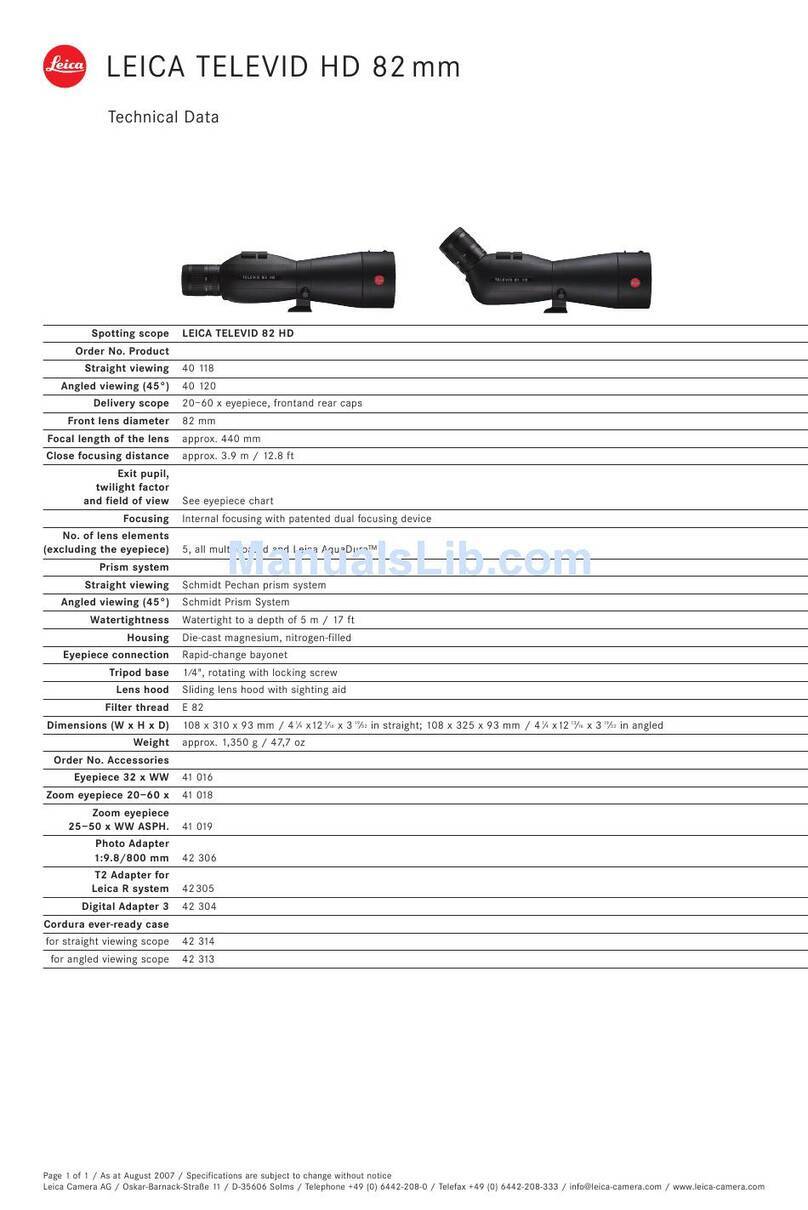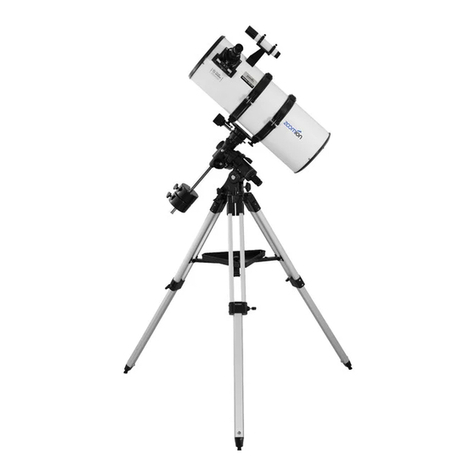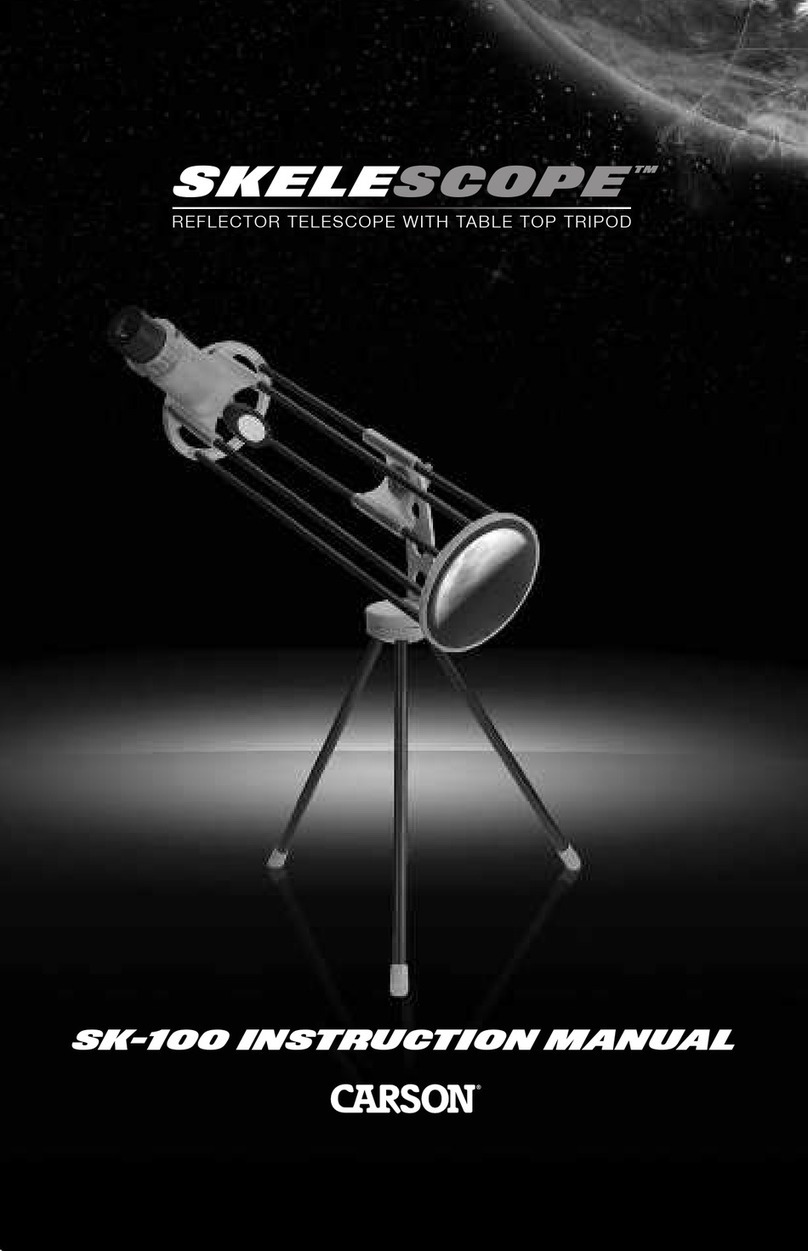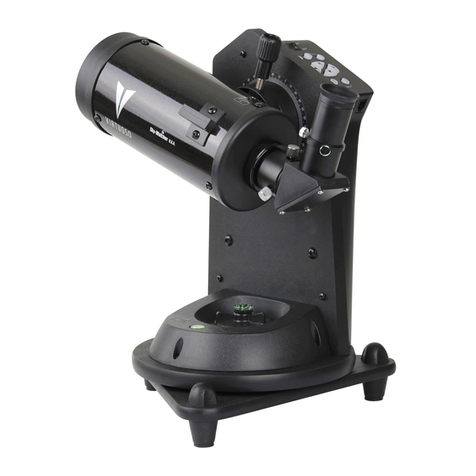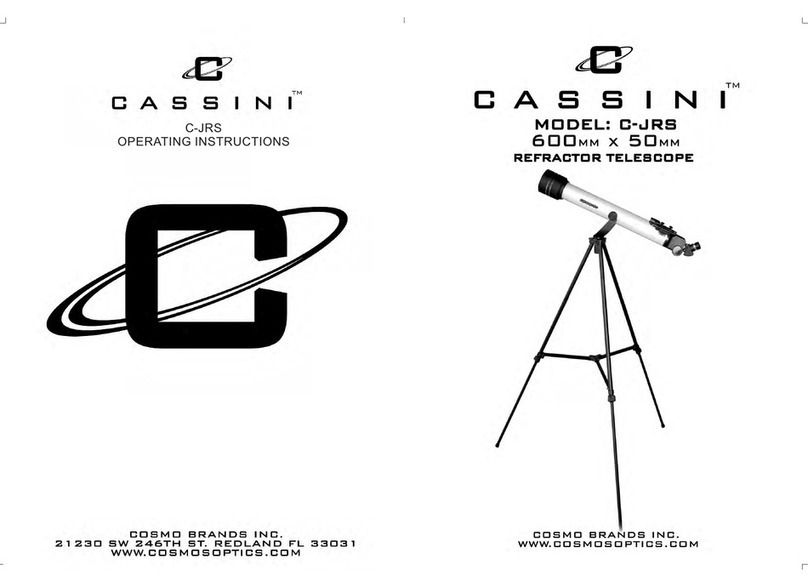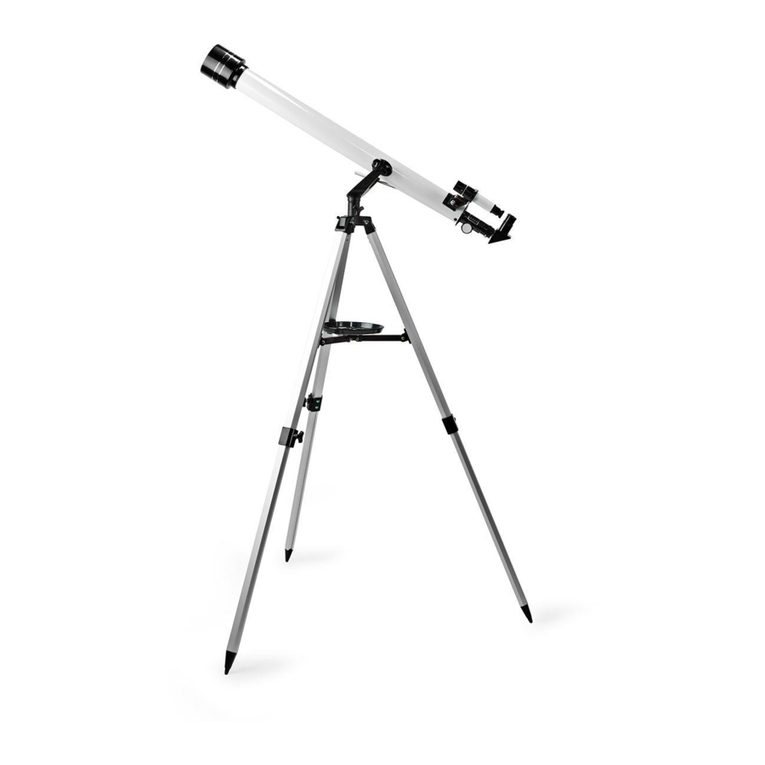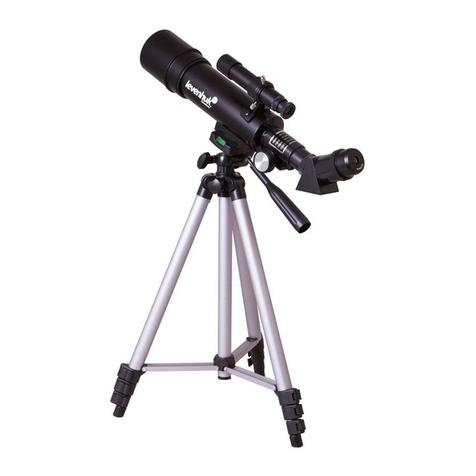Collimating is the process of aligning a telescope’s optics.
Your StarMax or Apex’s primary mirror was aligned at the
factory and should not need adjustment unless the telescope
is handled roughly.This manual contains information on how
to test the collimation of your telescope and instructions for
proper alignment should that be needed.
Star-Testing the Telescope
Before you start adjusting the primary mirror of your tele-
scope, make certain that it is actually out of collimation by
performing a star test.
Take your telescope out at dusk and let it acclimate to the
outside temperature; this usually takes 30-60 minutes.When
it is dark, point the telescope upwards at a bright star and
accurately center it in the eyepiece’s field of view. Slowly de-
focus the image with the focusing knob. If the telescope is
correctly collimated, the expanding disk should be a circle
(Figure 1). If the image is unsymmetrical, the scope is out of
collimation.Also, the dark shadow cast by the secondary mir-
ror should appear in the very center of the out-of-focus circle,
like the hole in a donut. If the “hole” appears off-center, the
telescope is out of collimation.
If you try the star test but the bright star you have selected is
not accurately centered in the eyepiece, the optics will
always appear out of collimation, even though they may be
perfectly aligned. It is critical to keep the star centered, so
over time you will need to make slight corrections to the tele-
scope’s position in order to account for the sky’s apparent
motion.
Collimating the StarMax/Apex
To collimate your telescope, remove the diagonal and eye-
piece and look into rear opening of the tube (also remove the
dust cover from the front of the tube). This should be done
indoors, with the telescope pointed at a white wall in a well-
lit room. Try to keep your eye centered with respect to the
rear opening of the tube as best as possible. Using an Orion
Collimating Eyepiece will aid greatly in keeping your eye cen-
tered and is strongly recommend.
Alternatively, you can make a crude collimating tool out of an
empty, black plastic 35mm film canister. It will not have
crosshairs, so it won’t be as precise, but it will be better than
nothing. Cut 1/2" from the top lip of the canister and put a
1/16" to 1/8" diameter hole in the center of its bottom. Insert
the film canister collimating tool into the focuser like an eye-
piece with the bottom end out.
Collimating Orion StarMax™and Apex™
Maksutov-Cassegrain Telescopes
(StarMax 90,102, and 127, Apex 90, 102, and 127)
(9821,9824,9826,9820,9823,9825)
Figure 1: A star test will determine if a telescope’s optics are
properly collimated. An unfocused view of a bright star through the
eyepiece should appear as illustrated on right if optics are perfectly
collimated. If circle is unsymmetrical, as in illustration on left, scope
needs collimation.

